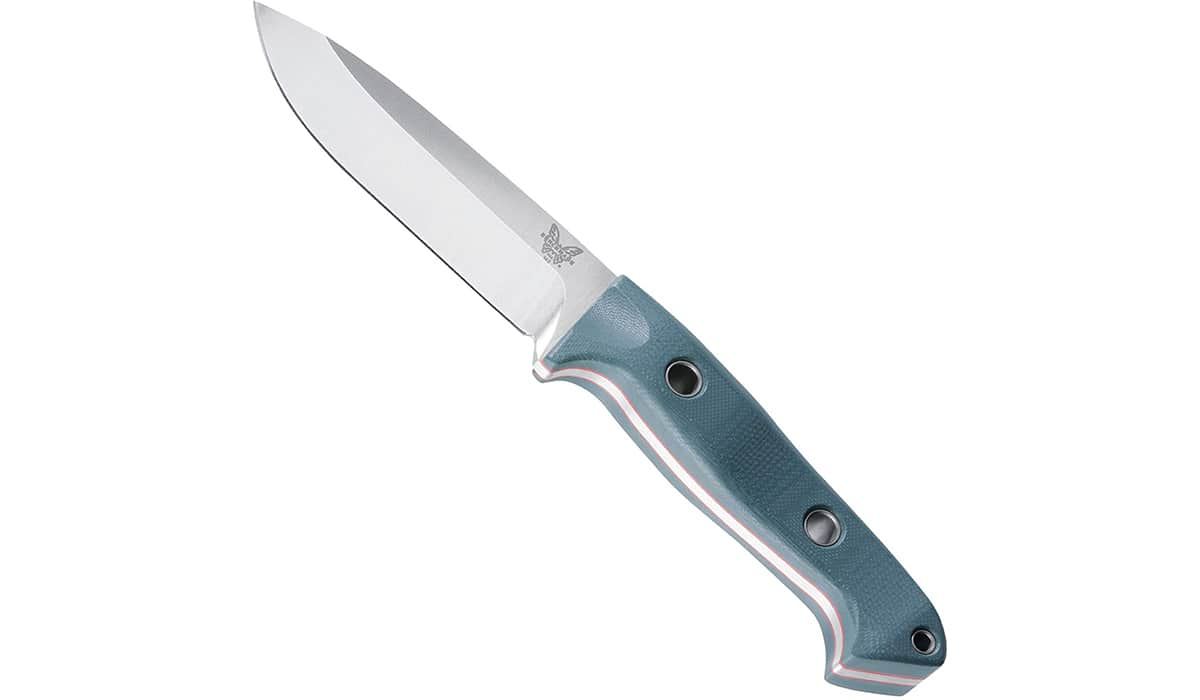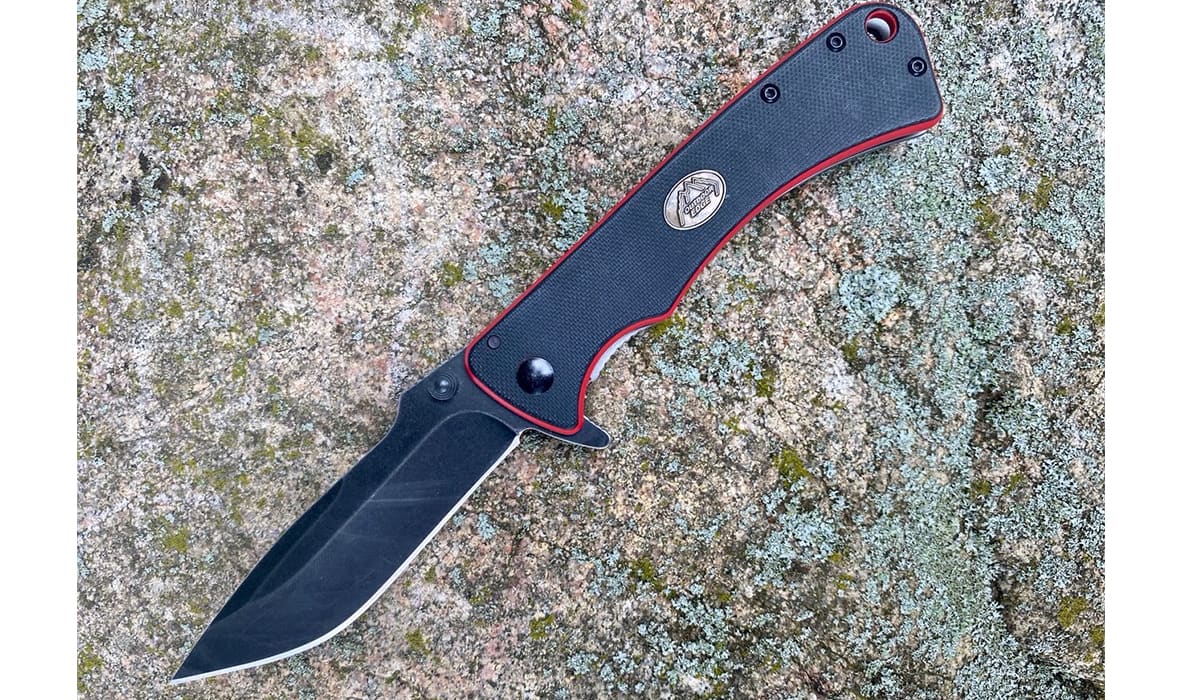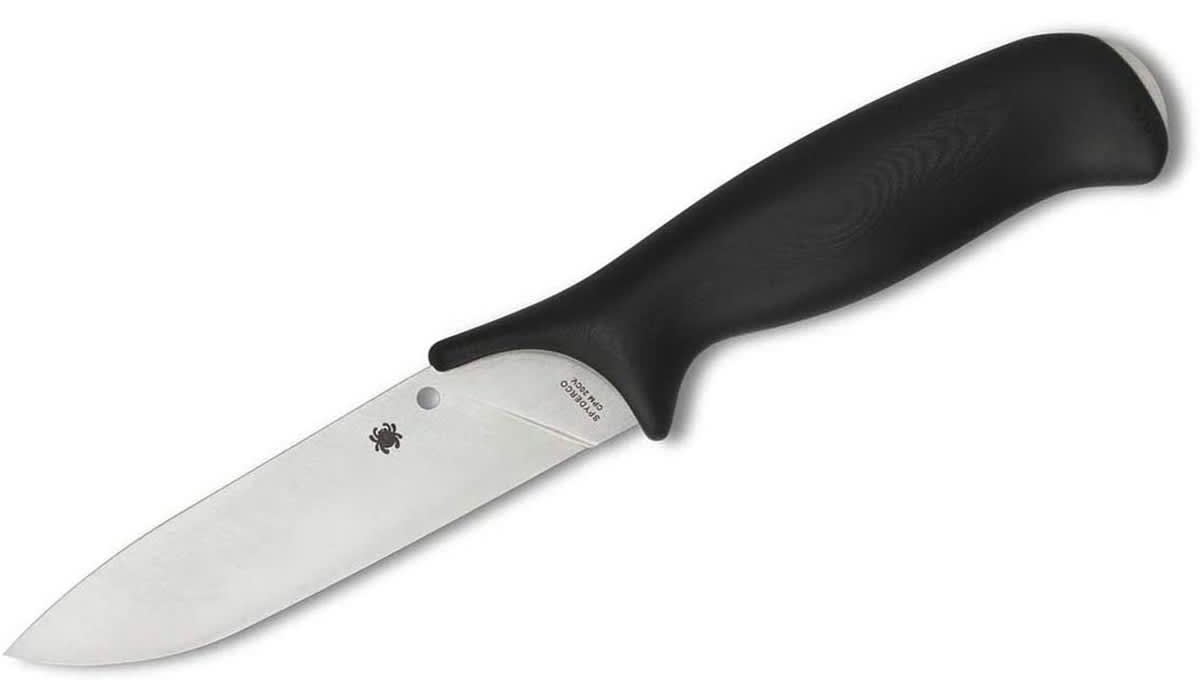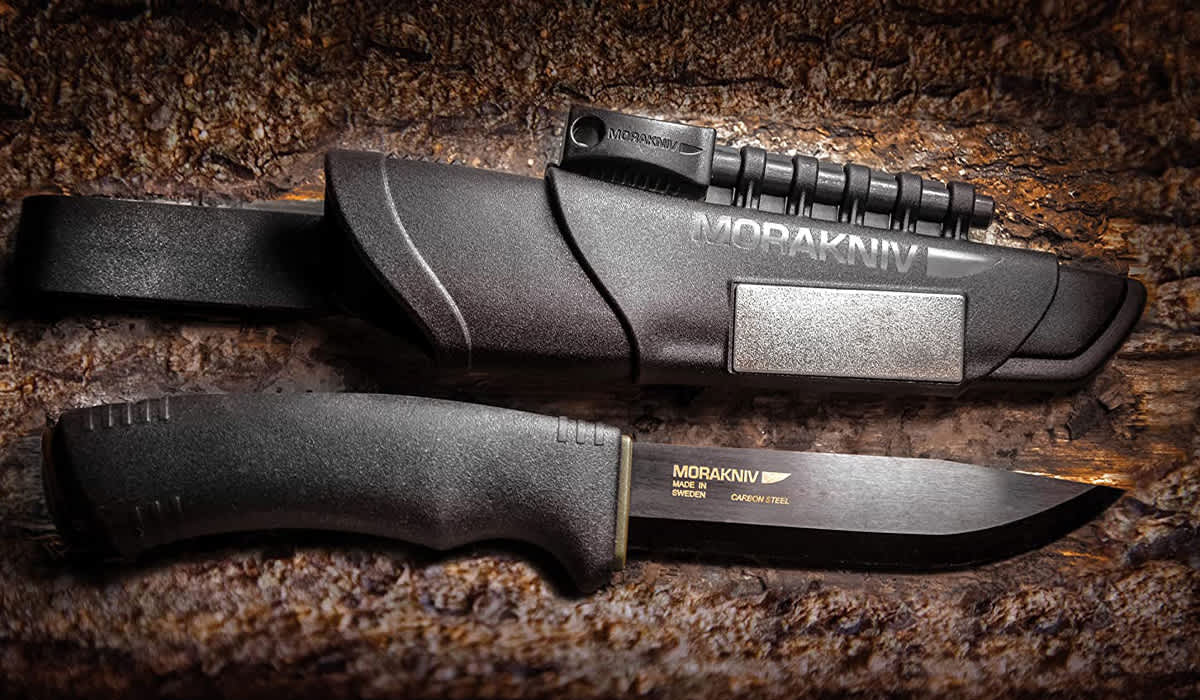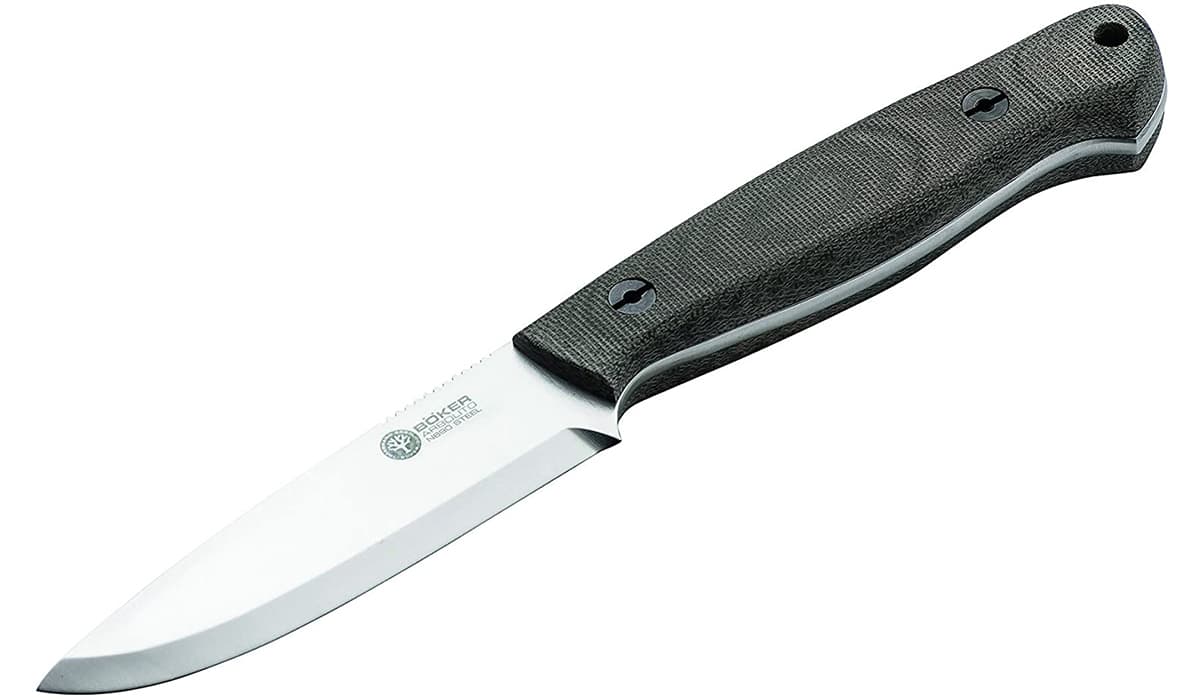Take on the Outdoors with the Best Bushcraft Knives
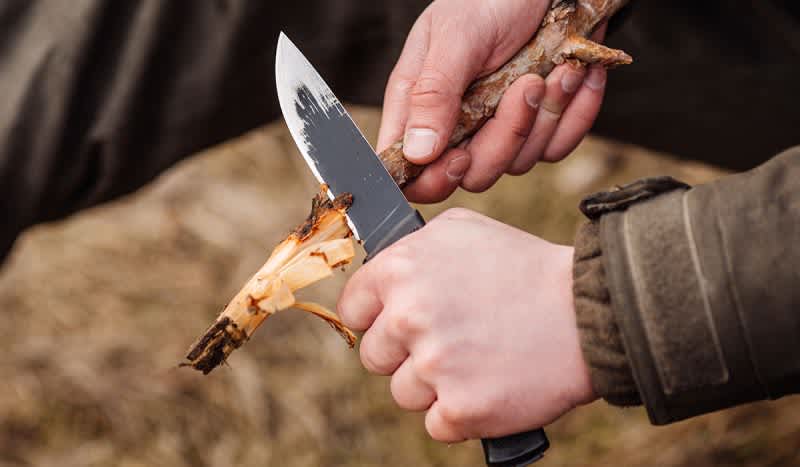
1. Benchmade Bushcrafter 162 - Editor's Pick
Crafted from strong CPM-S30V steel, the Bushcrafter from Benchmade is a serious knife designed to get you through any task you’d need it for, and never fail. The steel holds it edge really well, so dulling shouldn’t be too much of an issue. The handle is made from durable G10 and has strategic holes that exist to give you options while in the bush.
This knife is a perfect example of quality in a simple form. What you’re paying for is a chunk of hardened steel that has been precisely ground to a super-sharp edge. Not all steel is created equal. Why go for a more expensive knife? If the steel is the reason for the cost – and it usually is – you’ll get a knife you can use for as long as you want.
The Benchmade knife comes with a leather sheath and a limited warranty.
2. Outdoor Edge Divide - Folding Pick
I know – Bushcraft knives are traditionally fixed blade. I would normally agree, but this is a great folder with features worthy of a mention. The blade is 8Cr13MoV stainless steel with Blackstone coating and at least for me, it has held an edge very well. Want more? How about the G10 on one side and and titanium-coated 42OJ2 stainless steel on the other handle? It’s light but very durable. The smoothness is amazing too. It has an 18 ball-bearing pivot joint that flicks open with ease.
What I really like is the shape of the blade. It cuts well, and can be comfortably used in just about any situation from shedding back for fire tinder, filleting a fish for dinner and cutting rope, of course. Oh, and don’t forget, it’s available for less than $40!
4. Morakniv Bushcraft
If you just go searching for a bushcraft knife, chances are something from Morakniv would pop up in your results. The same can be said for lists of best bushcraft knives. Why is that? In a nutshell, it’s value. These are good knives at a great price. Do they have the high-end steel other knives have? No, but the high-carbon steel they use seems to hold and edge well, and takes being sharpened even better. The plastic sheath has a fire starter built in as well as a small sharpener. The blade design is a straightforward bushcraft blade with a thick, rubberized handle to keep it from slipping. For the money, it’s a great option.
5. Boker Arbolito Bushcraft
One of the biggest draws to this knife, at least for me, is also a drawback – It’s pretty. It looks really cool and I almost don’t want to use it. Almost. How does it get to be so pretty? The Micarta handle and the polished N690 blade have a lot to do with it.
This is a well-balanced knife with a blade length that is perfect for the bush. It’s not too long, and it’s not too short at four inches in length. Just keep in mind that some areas have restrictions on blade length if the knife isn’t readily visible. I also appreciate the precision in how this knife was crafted. Even something simple in design can be a sign of ingenuity when perfection is involved.
Know your bushcraft basics
Before you venture into the wild, there are some basic bushcraft skills you need to know. Being able to master these skills beforehand will not only make your trip more enjoyable, but also come in handy if you ever find yourself in an emergency situation.
Fire – It may seem basic, but you will need to be able to make a fire without a lighter or matches. You can’t count on having matches, and what if they get wet? A fire can keep you warm and make non potable water drinkable. You should always carry a firesteel and some dry tinder with you into the bush. I saw a few years ago that if you pack tinder, like cotton balls, some matches and whatever else you can fit into an Altoids box, it makes a great firestarter kit to carry in your pocket.
Water – You can survive without food for a lot longer than you can without water. If your bushcraft game is strong, you can find water quickly. Remember to either boil it, or have some kind of filter, like a Lifestraw, to keep your water safe to drink.
Pack right – Let’s face it, you’re not going off into the bush with just a knife and a few items, unless you really want to. Most of us would have a backpack with our essential gear. You don’t have to be Naked & Afraid. However, you don’t need to pack more than you really need to enjoy the adventure. And you need to think about your usage, too. Pack efficiently by making the things you use the most, and the emergency items, like a first aid kit, easy to get to. You don’t want to have to dig to find anything.
Knots – One of the bushcraft skills some overlook is learning how to tie basic knots. The sheepshank knot temporarily shortens a rope. It is made by making a double loop in the rope and tying a half hitch at each end. It can make a rope stronger at its weakest point, and can help secure something, like a tent or shelter. The fisherman’s eye knot makes a strong loop end, and is a good knot for securing something.The fisherman’s knot connects to lines together.

Rope – Of course, you have to have rope to tie those knots you now know how to do, so that should be an essential part of your kit. Small-diameter nylon rope is great for just about anything you can come up with. It can also be used for climbing, as long as the weight capacity is strong enough. There are many small-diameter climbing ropes that have multiple purposes. You can also add some space-saving paracord to your kit. An important bushcraft skill is to know what a rope can do, and what it can’t.
Sharpening your knife
Of course, you will want your knife sharp when you leave for your adventure. But what if your knife gets dull in the bush and you don’t have a knife sharpener with you?
You can make your own whetstone by finding flat rocks and slowly working the edge of your blade across. If you can find sandstone, this works great, but other rocks will do.

You can also use the paracord you brought, or even the rope. These fabrics won’t sharpen as fast as a rock will, but can help give you back the edge. If you wear a belt, the same principle applies, whether it’s a nylon belt, or a leather one. Both would work just fine.
Glass is another substance you can use. If you can find a shard of glass, the edge will help sharpen your knife. The top of the window in your car will work, too, but that makes me nervous. Plus, if you’re by your car, why not just go home and sharpen it? I won’t tell anyone you did.
What is a bushcraft knife?
A knife that will work for bushcraft must be sturdy, well made, and be designed to perform many functions. The blade should be sturdy, but not be overly thick to impede use.
What should I look for in the best bushcraft knives?
The main things for the best bushcraft knives are high-quality steel that holds and edge, a reasonable length for multi-use, and a well-designed handle for comfort and grip.
We are committed to finding, researching, and recommending the best products. We earn commissions from purchases you make using the retail links in our product reviews. Learn more about how this works.

